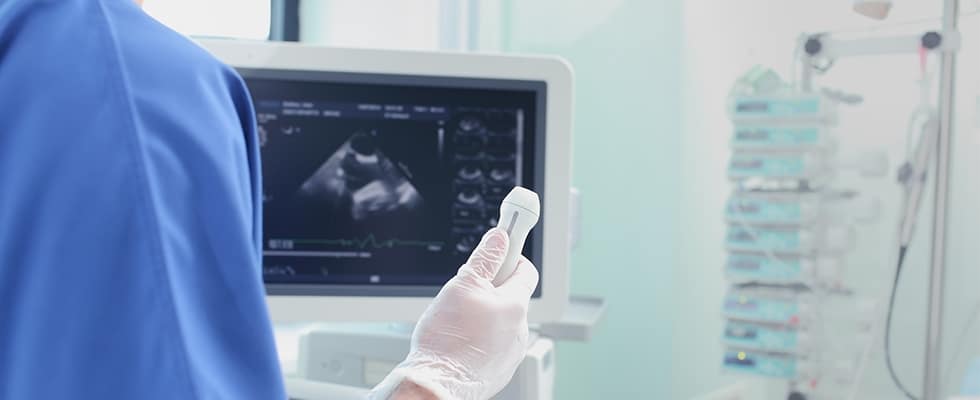
Even those of us in the medical field have had the awkward experience of being handed an ultrasound image of someone’s new baby and having to pause and think about what we may be looking at. The marvel of ultrasound, whether for pregnancies, guiding equipment, or monitoring progression of a medical concern, is clear. We can take a look inside the bodies of our patients with a simple wave of the hand, or, in this case, wand. How do we interpret those images though? Maverick Medical Education is learning more about ultrasound and how to assist patients in numerous fields, every day.
How it Works
Ultrasound uses high-frequency sound waves to create the images we see. By penetrating lighter tissue, like the skin, the sound waves can carry through the body until a denser tissue bounces those waves back. By measuring the speed at which those waves come back, an image can be pieced together in black, gray, and white. These images are produced in real time and can be observed with movement giving a better ongoing picture of what is taking place inside the body than traditional film or MRI imaging. Ultrasound is considered to be very safe, especially when used in trained medical settings. Unlike x-ray imaging, there is no exposure to radiation which can cause harm and build up over time.
Color and Contrast
By adjusting the strength of the waves, a technician can better hone in on specific areas they may be looking at. This aids in fine tuning the time it takes for those waves to travel through the body allowing for a clearer image to be produced. According to E.I. Medical Imaging, “fluid is always black and tissue is gray. The denser the tissue, the brighter white it will appear in ultrasound with the brightest white being bone.” A technician can also tweak and adjust different angles to capture multiple images of the same part of the body, allowing for a comprehensive look. A key component to remember in reading an ultrasound is that you may be looking at a mirror image. Therefore, the left side of the image is the left side of the body and the right side of the image is the right side of the body. This is not true for transvaginal ultrasounds. Additionally, you can adjust your screen to “correct” the image for you, but you will want to be aware of what settings your practice uses.
POCUS
Many of our pain management courses use ultrasound guiding techniques in order to provide optimum needle placement within the blood vessels or tissues where pain relief is desired. Point of care ultrasound is also being used by more medical professionals around the country in order to better care for the patients that enter their practice each day. Beyond the obvious use in obstetrics and gynecology, POCUS can give preliminary information about the heart, internal injuries, lung concerns, especially those relating to COVID or pneumonia in more recent months, or, according to the FDA, in “Doppler ultrasound, to visualize blood flow through a blood vessel, organs, or other structures.” POCUS can be a valuable tool for any medical professional and is rapidly assisting patients in new ways within and outside of hospital settings.
Ultrasound is another tool that every medical professional should have ready to help their patients to the best of their ability. We can provide the training you need to start implementing this tool in your practice. To learn more, contact us today, or sign up for our next course.




